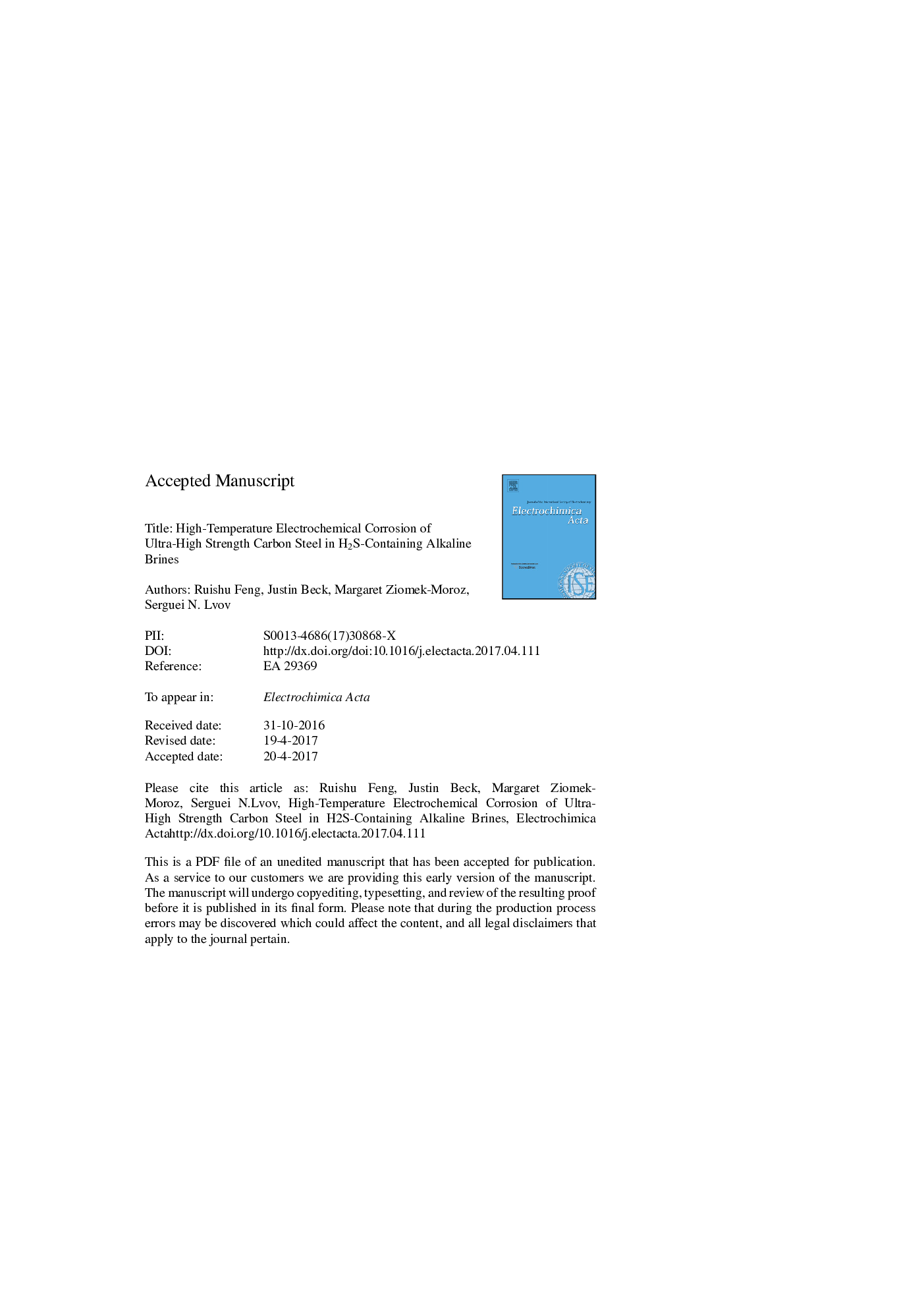| Article ID | Journal | Published Year | Pages | File Type |
|---|---|---|---|---|
| 4767024 | Electrochimica Acta | 2017 | 47 Pages |
Abstract
High-temperature corrosion of ultra-high strength low-alloy carbon steel, grade UD-165, was investigated using in situ electrochemical techniques in H2S-containing alkaline brines (5 wt% NaCl; pH 8.1, 9.8, and 10.8) at 200 °C. After 60 hours of electrochemical testing, the corrosion rate (CR) at pH 9.8 was the highest, almost twice of the lowest CR found at pH 8.1. The highest CR correlated with the highest HSâ(aq) ratio to the total reactive anions. The CR was accelerated at 200 °C by at least one order of magnitude compared with that at 85 °C. A modified method was used to obtain Tafel slopes from linear sweep voltammetry (LSV) plots with the limiting current effect, and the anodic and cathodic reactions were discussed based on the solution speciation, the Tafel slopes, and the corrosion products. Scanning electron microscopy (SEM) showed two layers of corrosion products at pH 8.1 and 9.8. The sulfur distribution moved outwards from the inner layer as pH increased from 8.1 to 10.8. With the pH increase at 200 °C, the major corrosion products changed from pyrrhotite and siderite to magnetite, which was in accordance with the reactive species and the Pourbaix diagram.
Related Topics
Physical Sciences and Engineering
Chemical Engineering
Chemical Engineering (General)
Authors
Ruishu Feng, Justin Beck, Margaret Ziomek-Moroz, Serguei N. Lvov,
